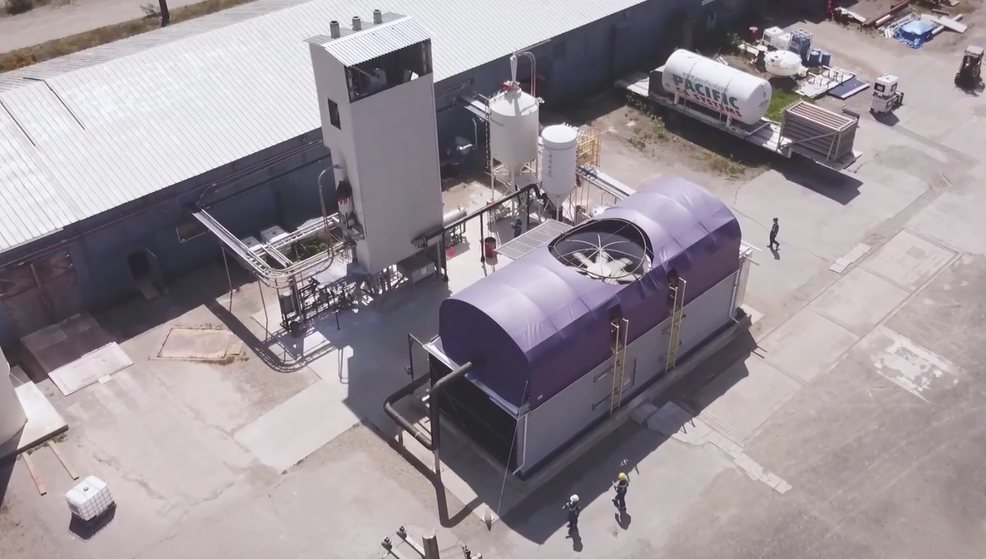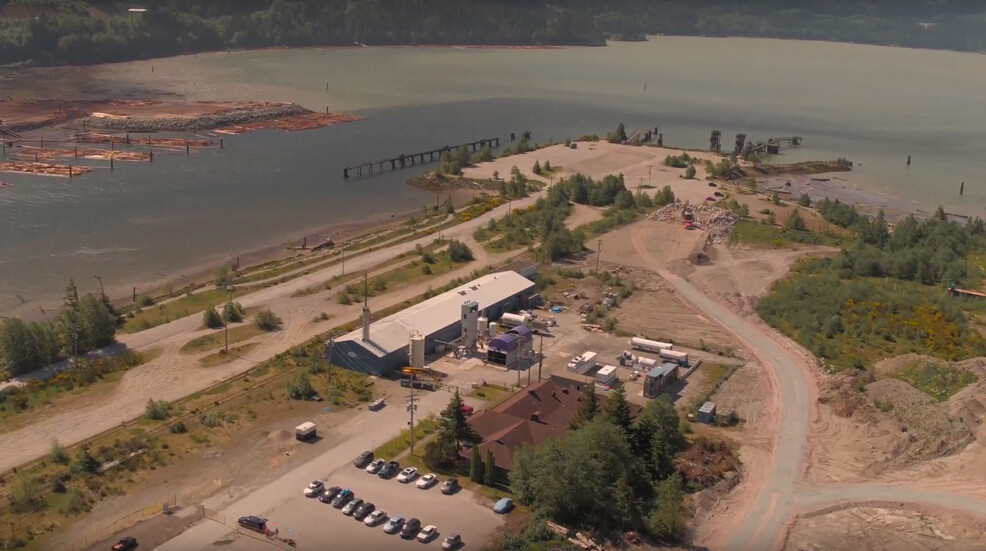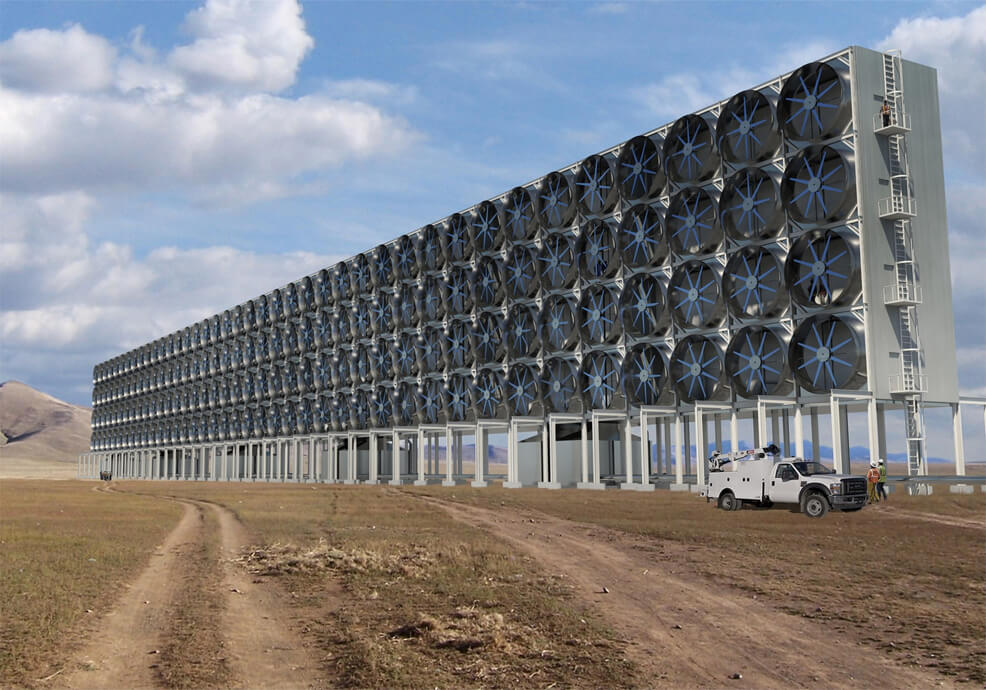
9th June 2018 Large-scale capture of atmospheric CO2 shown to be feasible and affordable David Keith, Professor of Applied Physics at Harvard University, has published the first viable solution for commercialising large-scale Direct Air Capture technology, which could help in reversing climate change.
Carbon Engineering (CE), a Canadian-based clean energy company, has published new research proving that CO2 can now be captured from the atmosphere for less than US$100 per ton. This is a huge reduction from the current cost of around US$600 per ton. Released in a peer-reviewed paper, CE's breakthroughs in Direct Air Capture (DAC) technology demonstrate, for the first time, a scalable and cost-effective process for extracting this major greenhouse gas. The implications for climate strategy are twofold – it allows the removal of existing CO2 from the air to counteract emissions too challenging or costly to eliminate at source, while enabling the production of clean fuels that significantly reduce transportation emissions. These outcomes can accelerate the shift to a "net zero" world that avoids the risks of climate change, while delivering affordable clean energy. The research was led by David Keith, a Harvard Professor and founder of CE, and published by Joule, a leading scientific journal dedicated to groundbreaking energy research. The findings are based on three years of testing and development at CE's pilot plant in Squamish, near Vancouver.
"Until now, research suggested it would cost US$600 per ton to remove CO2 from the atmosphere using DAC technology, making it too expensive to be a feasible solution to removing legacy carbon at scale," explains Keith. "At CE, we've been working on Direct Air Capture since 2009, running our pilot plant since 2015, and we now have the data and engineering to prove that DAC can achieve costs below US$100 per ton. No prior research in the peer-reviewed literature provides a design and engineering cost for a complete DAC system – and this paper fills that gap." CE is now commercialising its DAC technology through integration with the company's "AIR TO FUELS" process, which uses water electrolysis and fuels synthesis to produce clean liquid hydrocarbon fuels that are drop-in compatible with existing transportation infrastructure. CE has proven both DAC and "AIR TO FUELS" technologies and has been capturing CO2 from the atmosphere since 2015 and converting it into fuels since December 2017. "CE's vision is to reduce the effects of climate change by first cutting emissions, then reducing atmospheric CO2," says Steve Oldham, CEO. "Our clean fuel is fully compatible with existing engines, so it provides the transportation sector with a solution for significantly reducing emissions, either through blending or direct use. Our technology is scalable, flexible and demonstrated. Today, we're actively seeking partners who will work with CE to dramatically reduce emissions in the transportation sector and help us move to a carbon-neutral economy." "Direct Air Capture technology offers a highly-scalable pathway to removing carbon from the atmosphere," says Noah Deich, Executive Director at the Center for Carbon Removal. "This analysis demonstrates the potential for Carbon Engineering's technology to fall to a cost that would drive significant investment and corporate adoption in the near future."
The process works by sucking air into a modified cooling tower with fans, where it comes into contact with a liquid that reacts with the CO2. The only major inputs are water and electricity, while the output is compressed CO2 that can either be stored underground or converted into fuel. The artist's impression above shows how a future CE extraction system may look when completed and fully operational. The project has received funding from Microsoft founder and philanthropist Bill Gates, among others. In this prototype stage, it is capturing about a tonne of CO2 per day, or 365 tonnes per year. Carbon Engineering plans to build a small facility producing 200 barrels of clean fuel per day by 2021, then later a commercial plant able to produce 2,000 barrels per day. According to its developers, a DAC facility could be scaled up to capture a million tonnes per year, equivalent to the annual emissions of 250,000 cars. Unfortunately, climate change is a gargantuan problem – arguably humanity's greatest challenge. Since the Industrial Revolution, human activity has been responsible for cumulative CO2 emissions totalling 2,100 billion tons, partitioned among the atmosphere (42%), land (29%) and oceans (29%). The CO2 monitoring facilities at Mauna Loa are now showing 411.1 ppm, around 1.6 ppm higher than last year and a record high for the past two million years. It will take a herculean effort to slow this trend and restore the natural balance. With Carbon Engineering's new system, however – alongside the exponential growth of renewables and other clean tech – perhaps a turning point could be reached. "This is a real step forward, and it's not just our company saying it," adds Professor Keith. "I hope this changes views about this technology from being this thing which people think is a magic saviour which it isn't, or that it is absurdly expensive which it isn't, to an industrial technology that is do-able and can be developed in a useful way."
Comments »
If you enjoyed this article, please consider sharing it:
|









